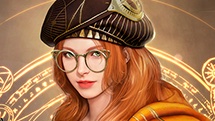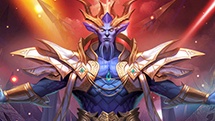by Jason Parker (Ragachak)
Roleplaying Game marketing in the 80s-90s was a very tenuous, risky time. The only RPGs we had access to were on computers — games like Ultima, Might & Magic, Wizardry, The Bard’s Tale, Putt Putt Goes To The Moon — you know, the classics. We saw so many peculiar choices because the executives likely thought that a new franchise would not succeed in America from Squaresoft. Since Final Fantasy 2j and 3j looked visually similar to Final Fantasy 1, we saw neither one of them (and again, marketing probably didn’t think that would sell). It might also be their difficulty. I cannot say for certain. But that’s why our Final Fantasy 2 and 3 are their 4 and 6 because we missed games in the franchise. It’s, as another reviewer has said, Chronologically Confusing. We were slowly getting fun console RPGs, but it was quite the wait. Dragon Quest became Dragon Warrior (though that was due to copyright issues of another game out in America), FF4 became FF2, and then there’s the Final Fantasy Legend.
I actually had the pleasure of playing The Final Fantasy Legend when I was a kid. We were visiting with family and me and my sister shared a Gameboy and one of our relatives had the game, so I got to play it. And boy did I burn through some batteries! But I did not find out until well into adulthood that The Final Fantasy Legend went by another name: “Warrior in the Tower of the Spirit World ~ Sa·Ga”. The Final Fantasy Legend series isn’t even a part of the Final Fantasy franchise! The other Gameboy series, Final Fantasy Adventure isn’t either! Well, it is and it isn’t. It’s a spin-off, and the beginning of the Mana Franchise, but that’s another tale for another day. The SaGa series was still fairly new, and I have a feeling Squaresoft did not have the confidence it could succeed on its own; instead, they opted to link it to the Final Fantasy series, as that already had clout in America, with the successful run of the first game (Final Fantasy).
I can’t really blame them, the market was not as strong for RPGs as it is now, but it was still a curious choice. It had a lot in common with Final Fantasy 2j though, in that your weapons and armor determined a lot of what you could do, and it also featured a “class system”, starring humans, mutants, and monsters. The player got to pick their party, between which they wanted, and the class and gender certainly mattered. This is a game that would have benefitted highly by being born in the Internet age. That leads me to one of the most serious downsides of this game: How do you know what you’re doing? How do you know what abilities/attacks do? What weapons increase what stats? What meat is going to turn your monster into what new monster? What attacks will they have? You won’t! Not without the Internet, or serious experimentation. That’s what makes this game so insanely hard, not the actual gameplay: Learning the game is the major hurdle.
Each class gains strength and power in different ways. Humans are powered up by getting potions and equipping certain weapons and armor. Dex always seemed the strongest to me, so Dex weapons (and equipping several of them) would mean you just blitz through most enemies. Mutants randomly learn new powers, and some of them can even be weaknesses! You can learn an elemental weakness or an elemental strength. You can only have x amount of abilities, and one will be overwritten for new ones. You can’t lock them down. So you just have to fight and fight and fight pray. Monsters gain new forms and abilities by eating meat. Specifically, the meat of fallen enemies. Ideally, you probably want to farm certain enemies, if you have the knowledge of what x can turn into, but as a kid in the 80s/90s? You didn’t. There is a pretty intricate system that you go through, that determines what you become based on what you are and what you eat (it’s a tier system). You don’t know that as a kid, but now, thanks to code dumps and Gamefaqs, we can min/max our way through these amazing systems.
The story was nothing to write home about, but most of the early Squaresoft RPGs had pretty bland straightforward stories. It seems like the party is trying to climb a tower to paradise, but it’s sealed. The party will travel to different worlds (World of Continent, World of Sky, World of Oceans, World of Ruin), collecting spheres of various colors, and doing battle with the evil forces. Once players get to the Creator at the end, they learn that it’s all basically a big game by the Creator to see the forces of good do battle with the forces of evil. So what do they do in response? What would any tabletop RPG party do? They attack God. Then they win (ideally), killing God, and seeing a door that could very well lead them to paradise. But they go home. Ugh. This game was so confusing because of the translation though. This game possibly had the worst translation of any Squaresoft RPG to date. That would be a fun research project, to figure out why Squaresoft and Enix could not hire people that simply understood the language and its nuance, or Japanese people who understood the nuance of English. Was it really that rare? I was a kid, so I don’t really know. But the game explained nothing well, and players well left mostly in the dark.Final Form:
The Final Fantasy Legend suffers from being developed in the wrong era. Had this been made in the age of the Internet, I know it would have been a classic. It had lots of options and ways to approach the game for all three classes, as well as a little chance thrown in for good measure. The story, while not award-winning, was at least interesting (when you know it), and for the Gameboy, this was a masterpiece in my opinion. It’s a shame that they did not have the faith in the SaGa franchise that they should have (a far more challenging series than Final Fantasy, let’s be honest), because if they had, SaGa could be a household name like Final Fantasy and not what it is now: A cult phenomenon for nerds on the Internet. You know, like me. Something marvelous could have happened, but instead, SaGa does not have the reach it should. This is a game that I think all retro RPG fans should play, but they should play it twice: Once without any help, to understand what it was really like, then break out the Gamefaqs guides to figure out what you’re actually doing.





![Game Boy Longplay [078] The Final Fantasy Legend (Part 2 of 2) - YouTube](http://www.onrpg.com/wp-content/uploads/2018/03/Game-Boy-Longplay-078-The-Final-Fantasy-Legend-Part-2-of-2-YouTube.jpg)



